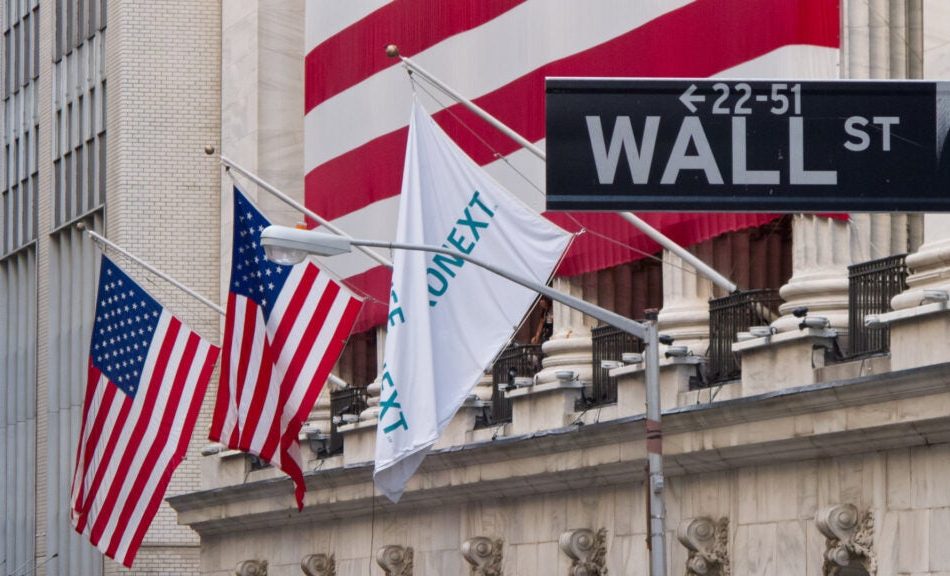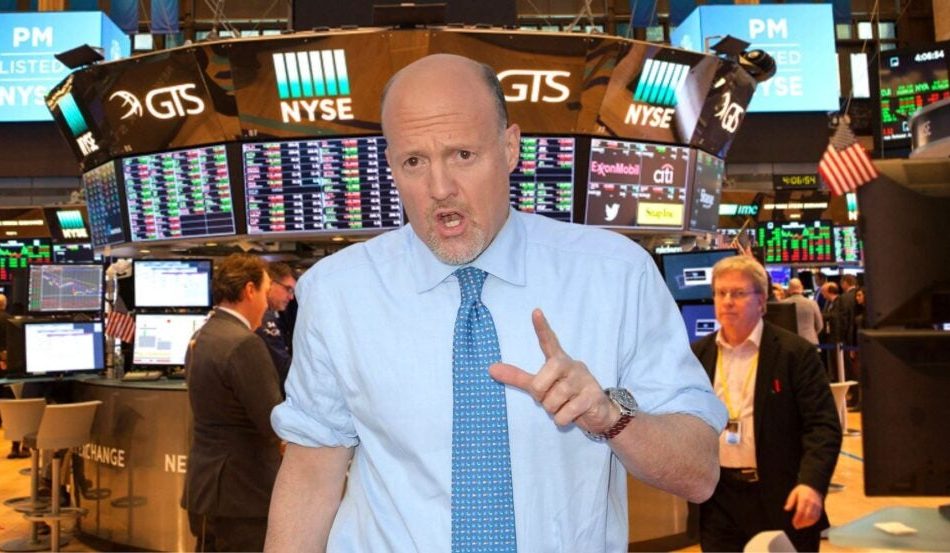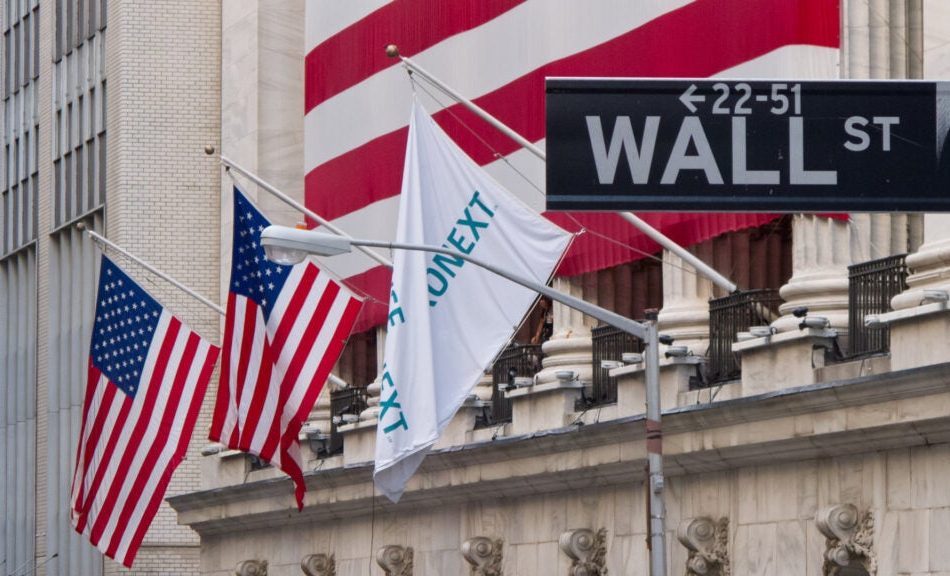I'm 67 With $2 Million in an IRA. How Do I Make Sure This Money Lasts the Rest of My Life?
SmartAsset and Yahoo Finance LLC may earn commission or revenue through links in the content below.
If you had $2 million saved in an individual retirement account (IRA) by age 67, could you make it last the rest of your life? With some wise planning and investing, stretching a $2 million nest egg over several decades is entirely possible. A sensible approach could be to focus on budgeting prudently, balancing investment risk and return, and securing additional sources of income if needed. These moves could further boost your chances of not outliving your savings. Talk to a financial advisor today about securing your retirement.
Making a $2 million IRA balance last for up to three decades involves considering several factors, only some of which are under your control. To start with something you can control, look first at how you can limit withdrawals from your IRA to a sustainable rate.
The often-cited 4% rule offers a baseline for a sustainable withdrawal rate. In your case, using it with a $2 million IRA would allow for $80,000 in withdrawals in the first year of retirement, with adjustments for inflation in the following years.
An annual income of $80,000 is likely enough to fund a comfortable, if not luxurious lifestyle, for most retirees. Data from the Federal Reserve Bank of St. Louis shows, on average, people ages 65 to 74 spend about $61,000 per year, while those 75 and older spend over $53,000 per year. But if you needed more than $80,000 to support your lifestyle, you could use a higher withdrawal rate or invest more aggressively to generate higher returns. Keep in mind, that you’ll also have Social Security benefits to rely upon, assuming you paid into the system throughout your career.
Concerning the investment approach, the goal is to earn solid returns while controlling risk. This will help you maintain purchasing power over time. Generally speaking, a diversified, 60/40 portfolio of stocks and bonds using low-fee index funds is a well-tested way to get market-matching growth without undue volatility. However, it’s only one of several paths you could take.
If you have other common retirement income sources like Social Security, pensions or part-time work, tapping them to pay expenses first can help you limit withdrawals from your savings. Preserving principal in your nest egg provides a cushion against possible negative events such as a market downturn, and increases the chances it will last the rest of your life.
A financial advisor can help you build a retirement income plan suited to your needs, including calculating how much you can afford to withdraw from your savings.
How The Intersection Of Public Health And Politics Can Shift The Societal Landscape
French philosopher Voltaire is credited with saying, “History never repeats itself. Man, always does.” This adage aptly conveys the nature of human beings to repeatedly engage in risky behaviors despite history being a guide as to how said behavior could play out.
Evidence of this behavior is arguably front and center now, as many would argue that there is a wave of populist movements occurring globally, coming after the COVID-19 pandemic and the elevated inflation that followed. As detailed in a report published by Goldman Sachs earlier this year, elections in more than 80 nations and territories occurred this year. As noted in the report, a common observation among political scholars is the growing “democratic backsliding” occurring within sovereign states. Democratic backsliding is a process of declining integrity for democratic values or institutions in a political system.
Against the backdrop of a challenging economic environment, populist movements appear to be gaining momentum. As such, some voters are seeking alternatives to current parties or policies, which may be leaving traditional incumbents in places like the U.S. and Europe at a disadvantage during this election cycle, potentially setting the stage for less liberal challengers and some populists to succeed. In Europe, the 2024 European Parliament elections saw a significant shift to the right in many countries, and populist parties gained votes and seats across the EU. Similarly, the re-election of Donald Trump is a strong indication of a return to conservatism.
Why The Rise In Populism?
Though the fast-moving technological developments occurring in our modern society arguably contribute to populism’s rise, the COVID-19 pandemic was an inflection point that shifted the global landscape and is viewed by many as an impetus for where we are now. Using history as a guide, research published in the American Journal of Public Health draws a connection between worsening public health and the support for radical political views, using the 1918 influenza pandemic and the rise of Italian fascism as a reference point.
The researchers found statistically significant evidence from the quantitative and qualitative analyses conducted to support their thesis. As emphasized in the research’s main findings, “Mussolini’s newspaper tended to blame “others” for the pandemic, such as Spaniards, and portrayed themselves as the voice of the common people against an out-of-touch “elite,” exploiting the health crisis for political gain.”
Drawing parallels from the research, the extrapolated idea is that the COVID-19 pandemic boosted populist sentiment in regions where public health declined and mortality rose. As stated in the research’s main findings, “counties where life expectancy stagnated or declined between 1980 and 2014 were more likely to swing toward support for Donald Trump in the 2016 presidential election. Similarly, communities experiencing worsening health in the United Kingdom saw greater support for Brexit. The same association also holds in different historical junctures. For instance, worsening mortality rates in German localities in the early 1930s were positively associated with the rise of the Nazi Party and influenza deaths in 1918 also correlated with the Nazi electoral boost.”
Simply put, a decline in public health and the economic hardship it potentially initiates can be a political catalyst that shifts members of society towards more populist ideologues.
Populism During A Precarious Period
The global economy is presently in a precarious position where technological advancement and innovation could upend many of the accepted practices and concepts of the present. Furthermore, regional conflicts in the Middle East and Eastern Europe (i.e., Russia – Ukraine), for which individuals have passionate opinions, can widen the ideological divide within our society.
Given the range of global activities, the move to populism can be viewed as a validation of the Social Cycle Theory, which posits that events and stages of society and history generally repeat themselves in cycles. The rise of populist movements can be a powerful sentiment that could be a deciding factor for voters at the ballot box. While the inevitability of change is often challenging to convey to individuals facing it, humanity is also resilient and able to overcome the odds.
Crossroads Summit 2024: Navigating Chaos, Innovate For The Future
With so much potential uncertainty ahead, navigating the seeming chaos will likely be top of mind for many investors. It is this chaos that The Crossroads Summit seeks to help investors cut through. The summit gathers leaders from various sectors – including technology, business, geopolitics, education and public policy, among others – to discuss the global economy’s critical issues and what the future could bring.
Speakers include some of the brightest minds in their industries, including Microsoft’s MSFT chief innovation officer Michael Jabbour, and Wall Street investor Cathie Wood. Panel discussion topics include “Strategic Adaptation: Preparing for Turbulence in the U.S. Landscape,” “Navigating the End of The World: Geopolitics and the Future of America” and “The New Economy: Bitcoin and the Rise of Alternative Hard Assets,” among others.
The summit aims to inspire collaborative efforts that bring about meaningful change and identify opportunities in the chaos. Speakers will explore solutions to societal problems by emphasizing empowerment, innovation and entrepreneurship. This year’s broad theme, Navigating Chaos, Innovate For the Future, will focus on the rapid pace of change today, discussing topics like AI advancement, political and economic uncertainty and the increase in armed conflict globally, among others. Presenting thought leaders and visionaries at this year’s summit will share their insights into these themes and talk of innovative potential solutions for the future.
The 2024 Crossroads Summit could be an excellent forum for investors and leaders to exchange and receive knowledge and forge relationships based on societal advancement – and prepare themselves to make the most of President-elect Donald Trump’s second term.
Featured photo by Kyle Glenn on Unsplash.
This post contains sponsored content. This content is for informational purposes only and is not intended to be investing advice.
© 2024 Benzinga.com. Benzinga does not provide investment advice. All rights reserved.
Millennials Primed to Lead 2024 Holiday Shopping Season as Nearly Two in Three Expect Their Income Will Increase in Next Year
CHICAGO, Nov. 20, 2024 (GLOBE NEWSWIRE) — With the holidays fast approaching, there is one certainty: Millennials enter the height of the holiday shopping season with a high level of optimism about their household finances and future income prospects. TransUnion’s TRU Q4 2024 Consumer Pulse study found that 33% of Millennials plan on spending more than $500 this holiday season – the highest of any generation.
The newest Consumer Pulse study is based on a survey of 3,000 American adults between October 1-9, 2024. Among the reasons why Millennials will play a large role this holiday shopping season: 65% are optimistic about their household finances – greater than the 58% total for the entire population and the highest among generations surveyed.
In addition, 41% of Millennials said their income increased during the past three months compared to 29% across generations; 63% of Millennials felt their income would increase in the next 12 months compared to 53% for the entire population.
| Millennials Optimistic About Household Finances and Income Increases | |||
| Generation/Insights |
Percent of consumers optimistic about their household finances in the next 12 months |
Percent of consumers who say their income has increased in last 3 months |
Percent of consumers who expect their income to increase in the next 12 months |
| Overall | 58% | 29% | 53% |
| Gen Z | 64% | 39% | 65% |
| Millennials | 65% | 41% | 63% |
| Gen X | 53% | 24% | 48% |
| Baby Boomers | 50% | 16% | 40% |
“We are about to enter the busiest period of the holiday shopping season and it’s a good sign for retailers and lenders that consumers are more optimistic about their household finances compared to one year ago,” said Charlie Wise, senior vice president and head of global research and consulting at TransUnion. “Based on our research, it’s clear that Millennials will play the largest role this holiday shopping season with the greatest expected spend. Consumers, led by Millennials and Gen Z, continue to most value the deals associated with Black Friday and Cyber Monday – either when shopping online or in-person.”
Though the holiday shopping season seemingly starts earlier each year, many consumers continue to be most interested in doing their shopping online or in-person between Thanksgiving Day and Cyber Monday. Four in 10 (41%) Americans are interested in shopping online on Thanksgiving Day, Black Friday and Cyber Monday. About one-third of consumers said they are interested in shopping in-person on Thanksgiving Day and Black Friday. The next most popular shopping period was prior to Thanksgiving (30%). Only 21% of consumers were interested in last-minute holiday shopping deals.
| Millennials Expected to Spend the Most This Holiday Shopping Season | |||||
| How much do you plan on spending this holiday shopping season? |
Overall | Gen Z | Millennials | Gen X | Baby Boomers |
More than $250 |
56% | 41% | 63% | 56% | 55% |
More than $500 |
28% | 15% | 33% | 30% | 29% |
Credit cards are still the most popular way to make holiday purchases at 38%, followed by debit cards (31%) and cash (16%). Non-traditional payment platforms such as mobile payment apps (ApplePay, PayPal, etc.) are at 7%, followed by Buy Now Pay Later (BNPL) at 4%.
Not surprisingly, Gen Z plans on using non-traditional payments at a higher rate than other generations – 15% for mobile payments apps and 7% for BNPL. Millennials also are more apt to use these payment types (10% mobile payment apps; 6% BNPL). “Though the use of non-traditional payments is still relatively small, we do believe BNPL will continue to gain in popularity, especially when BNPL payments become more widely reported to credit bureaus and begin factoring into credit scoring models,” added Wise.
Another reason non-traditional payments could increase in popularity: two-thirds (67%) of consumers said they conduct half or more of their holiday shopping online. This percentage is even higher for Millennials (80%) and Gen Z (73%) with Gen X not far behind at 69% and Baby Boomers at 51%.
Inflation still a worry, but concerns dissipating
Consumer optimism about household finances in the next 12 months increased this past year from 56% in Q4 2023 to 58% this quarter even as inflation for everyday goods remains a top concern. Eight in 10 consumers (80%) ranked inflation in the top three concerns affecting their household finances in the next six months and 46% ranked inflation as their top concern. The good news is that such concerns are down from 84% and 50%, respectively, in the second quarter of 2024.
Despite continuing concern about inflation, 81% of Americans reported their income increased or stayed the same in past three months, indicating a level of stability in household finances. Their income outlook is even stronger with 93% expecting their income to increase or to stay the same.
“While inflation, and higher prices generally, certainly remain a concern, the continued low unemployment rate and wage gains are helping many consumers weather higher costs for everyday goods and services. As long as consumers see continued wage growth and are gainfully employed, we should see healthy spending once more in this upcoming holiday season,” concluded Wise.
For more information about the Consumer Pulse study, please click here. To learn more about inflation and its impact on credit, click here.
About TransUnion TRU
TransUnion is a global information and insights company with over 13,000 associates operating in more than 30 countries. We make trust possible by ensuring each person is reliably represented in the marketplace. We do this with a Tru™ picture of each person: an actionable view of consumers, stewarded with care. Through our acquisitions and technology investments we have developed innovative solutions that extend beyond our strong foundation in core credit into areas such as marketing, fraud, risk and advanced analytics. As a result, consumers and businesses can transact with confidence and achieve great things. We call this Information for Good® — and it leads to economic opportunity, great experiences and personal empowerment for millions of people around the world.
http://www.transunion.com/business
| Contact |
Dave Blumberg |
| Email |
david.blumberg@transunion.com |
| Telephone |
312-972-6646 |

Market News and Data brought to you by Benzinga APIs
© 2024 Benzinga.com. Benzinga does not provide investment advice. All rights reserved.
US Stocks Poised For Tentative Start As Geopolitical Tensions, Nvidia Earnings Keep Investors Cautious: Tech Bull Expects AI Bellwether To Deliver 'Drop The Mic Performance'
U.S. stocks could open on a tentative note on Wednesday amid simmering geopolitical tensions. Futures of all three major indices were marginally up as investors weighed escalating tensions between Russia and Ukraine, and earnings from AI bellwether Nvidia Corp. NVDA.
U.S. equity markets have had a mixed week so far, with the Dow Jones facing pressure even as the S&P 500 and Nasdaq witnessed sideway movements.
| Futures | Change (+/-) |
| Nasdaq 100 | 0.11% |
| S&P 500 | 0.12% |
| Dow Jones | 0.19% |
| R2K | -0.09% |
In premarket trading on Wednesday, the SPDR S&P 500 ETF Trust SPY rose 0.13% to $591.05 and the Invesco QQQ ETF QQQ gained 0.10% to $503.96, according to Benzinga Pro data.
Cues From Last Session:
Markets had a second consecutive mixed session, with the Dow Jones closing lower by 0.3% while the S&P 500 edged up. The Nasdaq gained over 1% in the run-up to Nvidia’s earnings.
Crude oil prices continued to gain as Russia-Ukraine tensions escalated.
This geopolitical anxiety rubbed off on treasury yields as well, which edged up.
On the economic data front, housing starts in the U.S. declined by 3.1% to 1.311 million in October versus a revised 1.353 million in the previous month. U.S. building permits declined by 0.6% to an annual rate of 1.416 million in October.
Most sectors on the S&P 500 closed on a positive note, with energy, communication services, and consumer discretionary stocks recording the biggest gains on Monday.
However, industrial stocks bucked the overall market trend, closing the session lower.
| Index | Performance (+/-) | Value |
| Nasdaq Composite | 1.04% | 18,987.47 |
| S&P 500 | 0.40% | 5,916.98 |
| Dow Jones | -0.28% | 43,268.94 |
| Russell 2000 | 0.80% | 2,324.83 |
Insights From Analysts:
Wedbush’s Dan Ives expressed upbeat sentiment about Nvidia’s earnings, saying that the AI giant could deliver earnings beat and raise guidance as well.
“We expect a drop the mic performance from Nvidia tomorrow night as Godfather of AI Jensen & Co. are the only game in town with $1 trillion of AI Cap-Ex on the way with Nvidia’s GPUs the new oil and gold in this world.”
While there is optimism among analysts about Nvidia and other AI stocks, the European Central Bank expressed caution about the possibility of an “AI bubble.”
“This concentration among a few large firms raises concerns over the possibility of an AI-related asset price bubble,” the ECB said in its latest Financial Stability Review, underscoring the increasing dependence of the equity markets on select companies.
This could also be a cause of concern for equity markets beyond the U.S., noted the ECB.
“Also, in a context of deeply integrated global equity markets, it points to the risk of adverse global spillovers, should earnings expectations for these firms be disappointed.”
Ryan Detrick, chief market strategist at Carson Group, on the other hand, remained optimistic about equity markets.
“Stocks historically do better in years 1 and 2 of a President who was re-elected vs a new President in office.”
“We are in the third year of this bull market and it is worth noting these years can be on the weaker side of things. Good news is if the bull continues (as we expect) years 4-6 are all quite strong,” he added.
See Also: How To Trade Futures
Upcoming Economic Data
Wednesday’s economic calendar is fairly light.
- Fed Gov. Lisa Cooks will speak at 11 a.m. ET.
- Fed Gov. Michelle Bowman will speak at 12:15 p.m. ET.
Stocks In Focus:
- Nvidia Corp. NVDA stock edged up 0.3% in premarket trading on Monday after gaining 4.9% on Tuesday.
- MicroStrategy Inc. MSTR stock surged nearly 12% on Tuesday and gained another 2.7% in premarket trading on Wednesday after Bitcoin BTC/USD continued to chalk gains.
- Comcast Corp. CMCSA is expected to spin off its TV cable channels into separate publicly traded companies. Its stock rose 2.4% in premarket trading.
- Super Micro Computer Inc. SMCI stock fell over 4% in premarket trading after surging more than 31% on Tuesday after appointing a new auditor and submitting a plan to comply with the Nasdaq’s listing requirements.
- Nio Inc. NIO was down by 1.5% in premarket trading after the Chinese EV player reported widening losses due to intense competition.
- Target Corp. TGT fell over 18% in premarket trading after the company posted $1.85 earnings per share in the third quarter, well below Street expectations of $2.30.
- Investors are awaiting earnings results from Nvidia Corp. NVDA today. Palo Alto Networks Inc. PANW, Snowflake Inc. SNOW, and The TJX Companies, Inc. TJX today.
Commodities, Bonds And Global Equity Markets:
Crude oil futures surged in the early New York session, rising by 0.53% to hover around $69.61 per barrel.
The 10-year Treasury note yield increased to 4.426%.
Major Asian markets ended mixed on Wednesday, while European markets witnessed sideways movement in early trading.
Read Next:
Photo courtesy: Wikimedia
Market News and Data brought to you by Benzinga APIs
© 2024 Benzinga.com. Benzinga does not provide investment advice. All rights reserved.
Jim Cramer Likes Devon Energy, But Calls Another Stock 'Far Superior'
On CNBC’s “Mad Money Lightning Round,” Jim Cramer said Amphenol Corporation APH is a “terrific” stock.
On Oct. 23, Amphenol reported better-than-expected earnings for its fiscal third quarter.
When asked about Freeport-McMoRan FCX, Cramer said he don’t like the copper stocks, and “copper doesn’t yield a lot here.”
On Oct. 22, Freeport-McMoRan reported third-quarter FY24 results. Revenue stood at $6.79 billion, beating the consensus of $6.47 billion. Copper sales totaled 1.0 billion pounds, down 7% Y/Y and 2% above the July 2024 estimate, due to the timing of shipments and lower ore grades and operating rates in North America.
The Mad Money host said he likes Devon Energy Corporation DVN, but Coterra Energy Inc. CTRA is “far superior” to Devon.
“I don’t know how you can really make a lot of money in that business, frankly,” Cramer said when asked about TransMedics Group, Inc. TMDX.
On Oct. 28, TransMedics reported quarterly earnings of 12 cents per share, which missed the analyst consensus estimate of 30 cents per share. The company reported quarterly sales of $108.76 million, which missed the analyst consensus estimate of $115.00 million.
Price Action:
- Freeport-McMoRan shares gained 1.3% to settle at $44.12 on Tuesday.
- TransMedics shares gained 2.5% to close at $82.92.
- Amphenol shares gained 1.6% to close at $70.98.
- Devon Energy shares fell 2.2% to settle at $37.91 during the session.
Read Next:
Photo: Shutterstock
Market News and Data brought to you by Benzinga APIs
© 2024 Benzinga.com. Benzinga does not provide investment advice. All rights reserved.
Palantir Stock: Buy, Sell, or Hold?
Palantir‘s (NYSE: PLTR) share price has spiked recently, rising more than 220% over the past 12 months. Investors are optimistic about the company’s growth in the artificial intelligence (AI) market, as its analytics software helps companies and government agencies make sense of their vast quantities of data.
But Palantir’s soaring share price has no doubt left many investors wondering if they should sell the stock to lock in their gains, continue holding, or even buy shares. Here are a few suggestions.
Are You Missing The Morning Scoop? Breakfast News delivers it all in a quick, Foolish, and free daily newsletter. Sign Up For Free »
If you’re considering selling your Palantir stock, you should ask yourself a few questions first. Consider these good reasons to sell a stock:
-
The investment thesis for the company has changed.
-
The company is being acquired and its share price already reflects most of the value of the bid price.
-
You need the money.
-
You need to rebalance your portfolio.
Considering that nothing drastic has changed about Palantir’s business and that the artificial intelligence market remains healthy, if you hold the stock, it’s unlikely your initial reasons for buying it have ceased to apply. There’s also no news suggesting that Palantir is the target of acquisition interest.
Still, there’s nothing wrong with taking your large Palantir gains right now if you need the money for something else, like buying a new house or another large expense. What’s more, if Palantir now makes up too much of your overall portfolio’s value, you may want to sell some shares to rebalance it.
If you already own Palantir, you’re likely trying to decide whether the stock has more room to run. While there’s no way to know for sure, the company’s impressive growth is an indicator that it’s still on the right track.
Palantir’s revenue increased 30% in the third quarter to $726 million, comfortably ahead of Wall Street’s consensus estimate of $701 million. And the company’s adjusted earnings per share (EPS) grew 43% from the year-ago quarter to $0.10, beating analysts’ consensus estimate of $0.09.
The company also grew its customer count by an impressive 39% and closed 104 deals worth $1 million or more.
In short, Palantir’s business is doing well and nothing fundamentally changed with the company that should give investors pause. All of this means that holding onto your Palantir shares is probably a good strategy right now.
US Stocks Poised For Cautious Start As Geopolitical Tensions, Nvidia Earnings Keep Investors Cautious: Tech Bull Expects AI Bellwether To Deliver 'Drop The Mic Performance'
U.S. stocks could open on a tentative note on Wednesday amid simmering geopolitical tensions. Futures of all three major indices were marginally up as investors weighed escalating tensions between Russia and Ukraine, and earnings from AI bellwether Nvidia Corp. NVDA.
U.S. equity markets have had a mixed week so far, with the Dow Jones facing pressure even as the S&P 500 and Nasdaq witnessed sideway movements.
| Futures | Change (+/-) |
| Nasdaq 100 | 0.11% |
| S&P 500 | 0.12% |
| Dow Jones | 0.19% |
| R2K | -0.09% |
In premarket trading on Wednesday, the SPDR S&P 500 ETF Trust SPY rose 0.13% to $591.05 and the Invesco QQQ ETF QQQ gained 0.10% to $503.96, according to Benzinga Pro data.
Cues From Last Session:
Markets had a second consecutive mixed session, with the Dow Jones closing lower by 0.3% while the S&P 500 edged up. The Nasdaq gained over 1% in the run-up to Nvidia’s earnings.
Crude oil prices continued to gain as Russia-Ukraine tensions escalated.
This geopolitical anxiety rubbed off on treasury yields as well, which edged up.
On the economic data front, housing starts in the U.S. declined by 3.1% to 1.311 million in October versus a revised 1.353 million in the previous month. U.S. building permits declined by 0.6% to an annual rate of 1.416 million in October.
Most sectors on the S&P 500 closed on a positive note, with energy, communication services, and consumer discretionary stocks recording the biggest gains on Monday.
However, industrial stocks bucked the overall market trend, closing the session lower.
| Index | Performance (+/-) | Value |
| Nasdaq Composite | 1.04% | 18,987.47 |
| S&P 500 | 0.40% | 5,916.98 |
| Dow Jones | -0.28% | 43,268.94 |
| Russell 2000 | 0.80% | 2,324.83 |
Insights From Analysts:
Wedbush’s Dan Ives expressed upbeat sentiment about Nvidia’s earnings, saying that the AI giant could deliver earnings beat and raise guidance as well.
“We expect a drop the mic performance from Nvidia tomorrow night as Godfather of AI Jensen & Co. are the only game in town with $1 trillion of AI Cap-Ex on the way with Nvidia’s GPUs the new oil and gold in this world.”
While there is optimism among analysts about Nvidia and other AI stocks, the European Central Bank expressed caution about the possibility of an “AI bubble.”
“This concentration among a few large firms raises concerns over the possibility of an AI-related asset price bubble,” the ECB said in its latest Financial Stability Review, underscoring the increasing dependence of the equity markets on select companies.
This could also be a cause of concern for equity markets beyond the U.S., noted the ECB.
“Also, in a context of deeply integrated global equity markets, it points to the risk of adverse global spillovers, should earnings expectations for these firms be disappointed.”
Ryan Detrick, chief market strategist at Carson Group, on the other hand, remained optimistic about equity markets.
“Stocks historically do better in years 1 and 2 of a President who was re-elected vs a new President in office.”
“We are in the third year of this bull market and it is worth noting these years can be on the weaker side of things. Good news is if the bull continues (as we expect) years 4-6 are all quite strong,” he added.
See Also: How To Trade Futures
Upcoming Economic Data
Wednesday’s economic calendar is fairly light.
- Fed Gov. Lisa Cooks will speak at 11 a.m. ET.
- Fed Gov. Michelle Bowman will speak at 12:15 p.m. ET.
Stocks In Focus:
- Nvidia Corp. NVDA stock edged up 0.3% in premarket trading on Monday after gaining 4.9% on Tuesday.
- MicroStrategy Inc. MSTR stock surged nearly 12% on Tuesday and gained another 2.7% in premarket trading on Wednesday after Bitcoin BTC/USD continued to chalk gains.
- Comcast Corp. CMCSA is expected to spin off its TV cable channels into separate publicly traded companies. Its stock rose 2.4% in premarket trading.
- Super Micro Computer Inc. SMCI stock fell over 4% in premarket trading after surging more than 31% on Tuesday after appointing a new auditor and submitting a plan to comply with the Nasdaq’s listing requirements.
- Nio Inc. NIO was down by 1.5% in premarket trading after the Chinese EV player reported widening losses due to intense competition.
- Target Corp. TGT fell over 18% in premarket trading after the company posted $1.85 earnings per share in the third quarter, well below Street expectations of $2.30.
- Investors are awaiting earnings results from Nvidia Corp. NVDA today. Palo Alto Networks Inc. PANW, Snowflake Inc. SNOW, and The TJX Companies, Inc. TJX today.
Commodities, Bonds And Global Equity Markets:
Crude oil futures surged in the early New York session, rising by 0.53% to hover around $69.61 per barrel.
The 10-year Treasury note yield increased to 4.426%.
Major Asian markets ended mixed on Wednesday, while European markets witnessed sideways movement in early trading.
Read Next:
Photo courtesy: Wikimedia
Market News and Data brought to you by Benzinga APIs
© 2024 Benzinga.com. Benzinga does not provide investment advice. All rights reserved.







